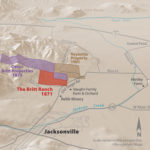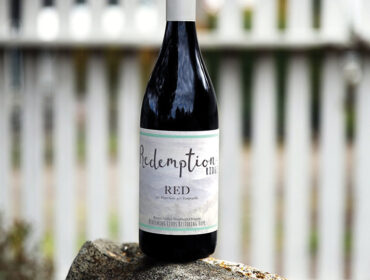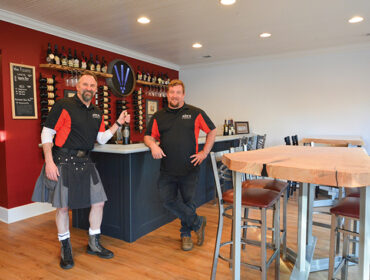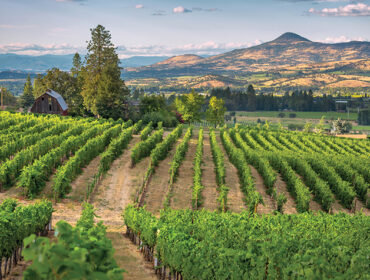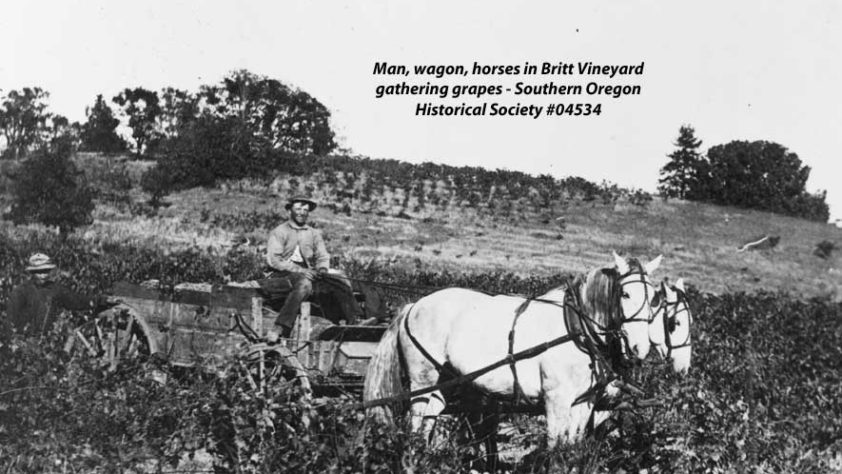
In Search of Peter Britt’s Original Valley View Vineyard – by MJ Daspit
While compiling Rogue Valley Wine, a pictorial history of the local wine industry co-authored with Eric Weisinger (Arcadia Publishing, 2011), I became familiar with Jacksonville’s iconic pioneer photographer, horticulturalist and winemaker Peter Britt (1819-1905). Today his name is synonymous with the summer music festival held above First Street in Jacksonville. And with the growing reputation of Southern Oregon’s wine culture, Britt becomes all important as the starting point of our story. Telling that story and relating Britt’s early wine enterprise to today’s wineries and vineyards is key to establishing our heritage as a wine region.
We know that Britt kept grapevines in the garden downslope from his residence and winery on the hilltop site of today’s Britt Festival grounds. We also know there was another Britt vineyard, larger than the several rows in his garden. This second vineyard, called “Valley View,” was said to be north of town. A more exact location was not to be had, so as a writer without a day job, I decided to see if I could pinpoint it.
As I set out, I anticipated two questions that needed to be addressed at the outset:
Question one was, “Isn’t Valley View the winery belonging to the Wisnovsky family?” Yes, there is a modern-day Valley View Winery in Ruch with original vineyards planted in 1972 and it’s entirely different from Britt’s Valley View Vineyard planted in the early 1870’s.
Question two was, “What’s the point of finding the exact location of Britt’s Valley View?” I may be vulnerable to the same impulse, albeit on a more modest scale, that prompts Easterners to put signs on buildings claiming George Washington slept here! But apart from that, I realized locating the site could lead to discovery of old vineyard rows containing plant material. If plant material were recovered it could be analyzed to determine variety…a slim chance, admittedly, but you don’t know until you look.
The first step in this sort of research was to find out what others had discovered before. The foremost local historian of the Rogue Valley wine industry is retired doctor turned winemaker Willard Brown. I consulted his account, “Wine in the Rogue Valley: Peter Britt and the Beginnings.” I also consulted an exhaustive biography of Peter Britt completed in 1972 by Alan C. Miller as a Master’s Degree thesis. Though never published commercially, apart from a collection of photographs with brief text based on the thesis (Photographer of the Frontier: The Photographs of Peter Britt; Interface, 1976) Miller’s professionally-documented work remains the definitive biography of Britt.
Both Brown and Miller tell the story of how in 1873 Britt got into trouble with the Internal Revenue Service for failure to pay taxes and license fees for his winemaking venture. In a letter to the judge deciding his case, Britt claimed to be growing just a few grapes in his garden to make small quantities of wine for occasional sale to his neighbors. This explanation apparently didn’t cut it, because in short order Britt paid up, named his business “Valley View Vineyard” and began advertising. Brown points out that this was the first commercial winery in the state of Oregon.
Another source cited by both historians is an 1890 report by the Oregon State Board of Agriculture titled “The Resources of Southern Oregon.” This contemporary source names seventeen Southern Oregon grape growers, ten in the Jacksonville area. The report locates Britt’s five-acre vineyard (it eventually grew to fifteen acres) a mile and a half north of Jacksonville, and notes the harvest is nearly all made into wine.
The next step in my research was to view the Britt diaries archived at the Southern Oregon Historical Society library. Faithfully kept over decades starting in January 1859, the crabbed handwriting in a German-Swiss dialect poses an all but insurmountable challenge to the researcher. But one brave soul, the late Elly Beck of Medford, spent years translating the diaries using a magnifying glass, gloves, paper and pencil. Beck, who died in 1994, got as far as the end of 1883. The translations show Britt recorded mostly weather observations and cash accounts with occasional notes on travels or plant acquisitions. There are also terse entries about vineyard and winery activities that distinguish between the “garden” vines planted around Britt’s house and those on the “farm” or “ranch.” The earliest entry on the latter is from October 14, 1872: “got grapes from the farm.” Through 1887, entries about grapes from the farm or ranch generally note the superiority of wine made from these grapes as compared to those harvested around the house.
Based on Britt’s earliest diary entry about a harvest from the farm, I concluded Valley View must have been planted before 1872. This led me to an “aha” moment. Why not figure out where Valley View was by searching Britt’s property deeds for any land he had acquired north of Jacksonville before 1872?
Jackson County Recording Supervisor Carmen Helman showed me the historical index that lists deeds back to the mid-1800’s and demonstrated how to find digital images of the hand-written deeds in the county online database. Through a blend of old and new technologies, I was soon squinting at close-spaced lines of tiny cursive in forty-seven Britt deeds.
I took the property descriptions culled from the deeds to Benchmark Maps, thinking even if the antique land references meant nothing today, I’d still get some cocktail party conversation out of it. (“Well, as I said to my cartographer . . .”)
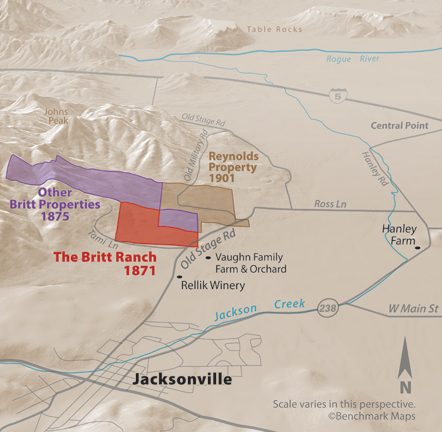 Benchmark’s Neil Allen agreed to take on the task of plotting the Britt properties, ultimately producing a map (below) of what we came to call Area 42, about 110 acres that Britt acquired in 1871. It lies to the north of Jacksonville on the west side of Old Stage Road between Tami Lane and Old Military Road. By 1875 Britt had added another 480 contiguous acres to the original tract.
Benchmark’s Neil Allen agreed to take on the task of plotting the Britt properties, ultimately producing a map (below) of what we came to call Area 42, about 110 acres that Britt acquired in 1871. It lies to the north of Jacksonville on the west side of Old Stage Road between Tami Lane and Old Military Road. By 1875 Britt had added another 480 contiguous acres to the original tract.
A 1911 letter from Britt’s son Emil to his sister Mollie describes a brush fire that had spread to the ranch from the neighboring ‘Renolds’ property. Again using property descriptions in deeds, I found one ‘Reynolds’ property abutting Britt’s post-1875 northeast property line, lending support to the conclusion that Area 42 was the original tract known as “the ranch.”
I’m satisfied it’s safe to say Britt’s fifteen-acre Valley View Vineyard lies within the 110 acres of the 1871 property boundary. The next question was, what was planted there? Stay tuned for those findings in the next installment of Wine Country Heritage.
© Southern Oregon Wine Scene
Related Post
RoxyAnn Winery–Making a Difference with Redemption...
Update to this article on 07/29/21 – “… the Board of Directors of Redemption Ridge have made the difficult decision to clo...
Awen Winecraft: An Inspirational New Reason...
As if you needed another reason to visit historic Jacksonville, now there’s another draw—Awen Winecraft’s new tasting room located at ...
Rogue Valley Rising – by Valerie...
MEDFORD, OREGON’S star is rising on the world stage as it rapidly becomes a top destination for connoisseurs of fine wine and for enthusia...
